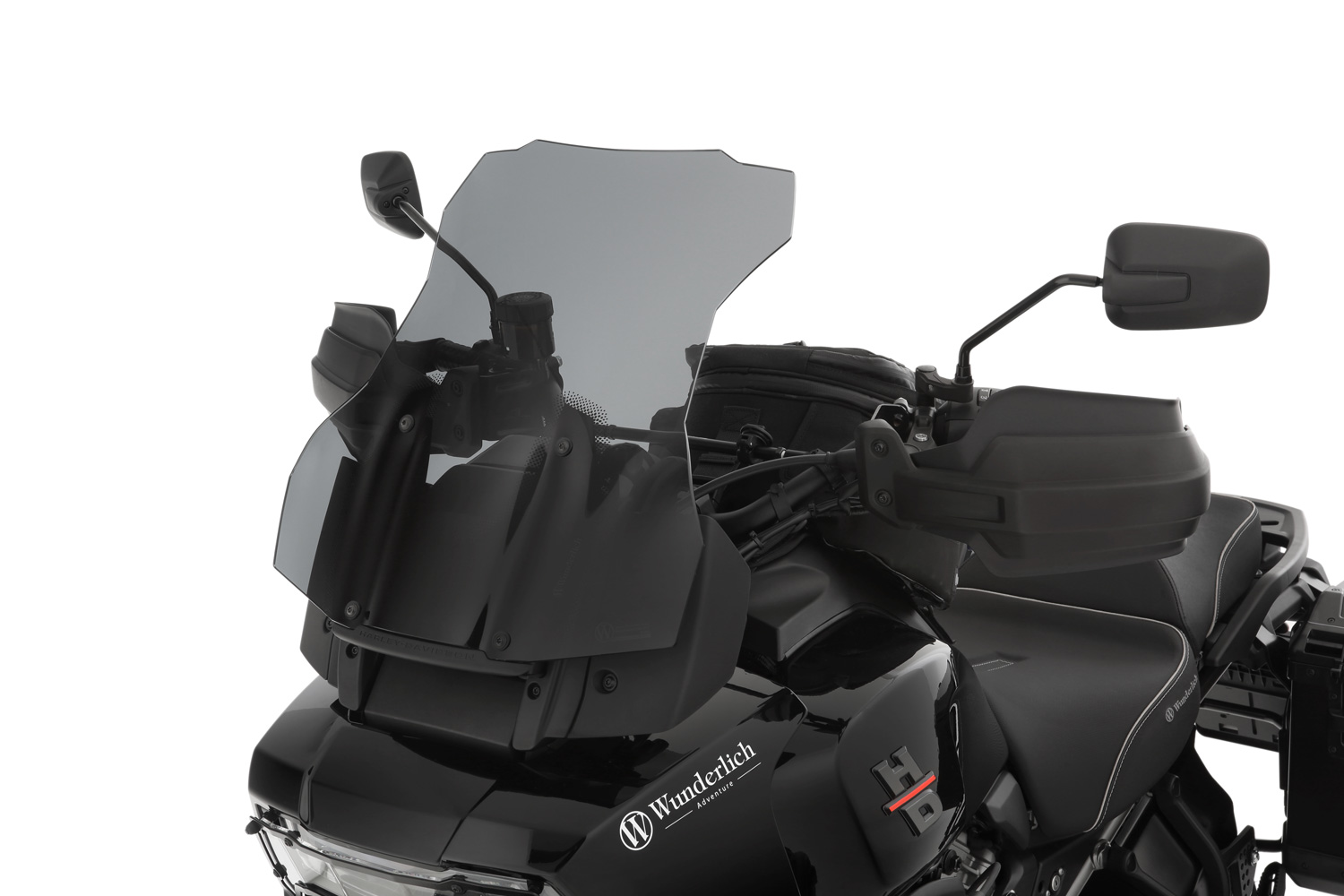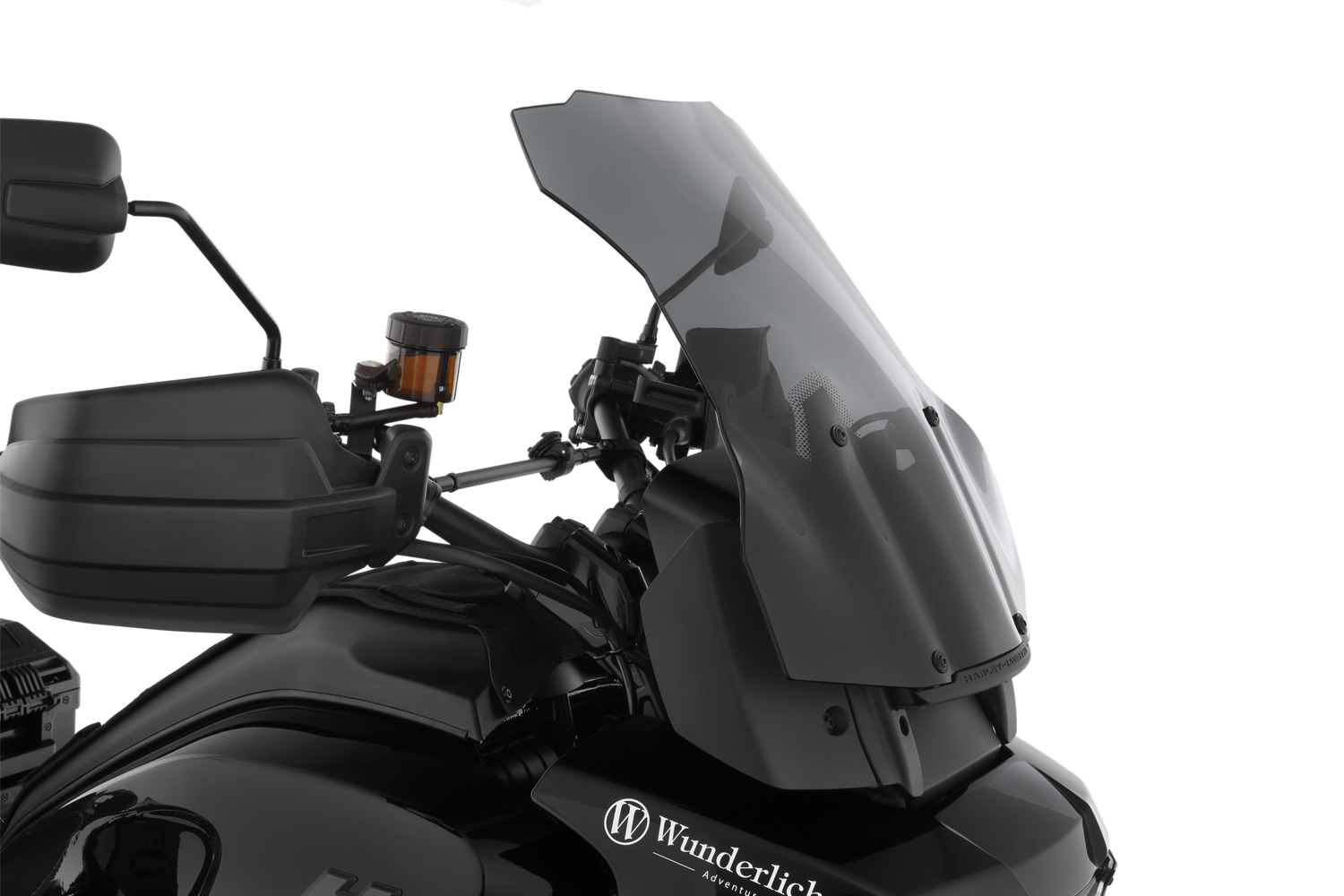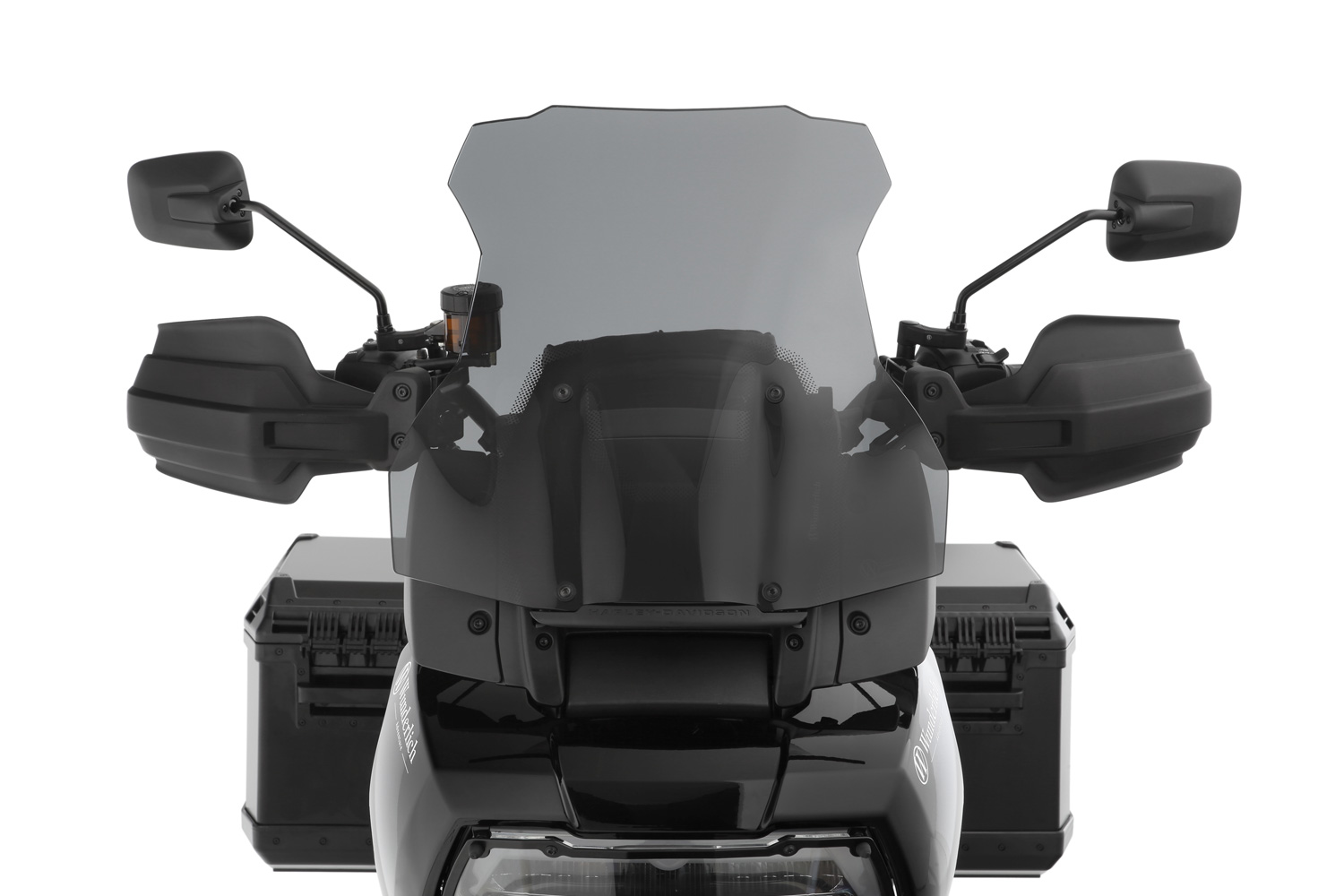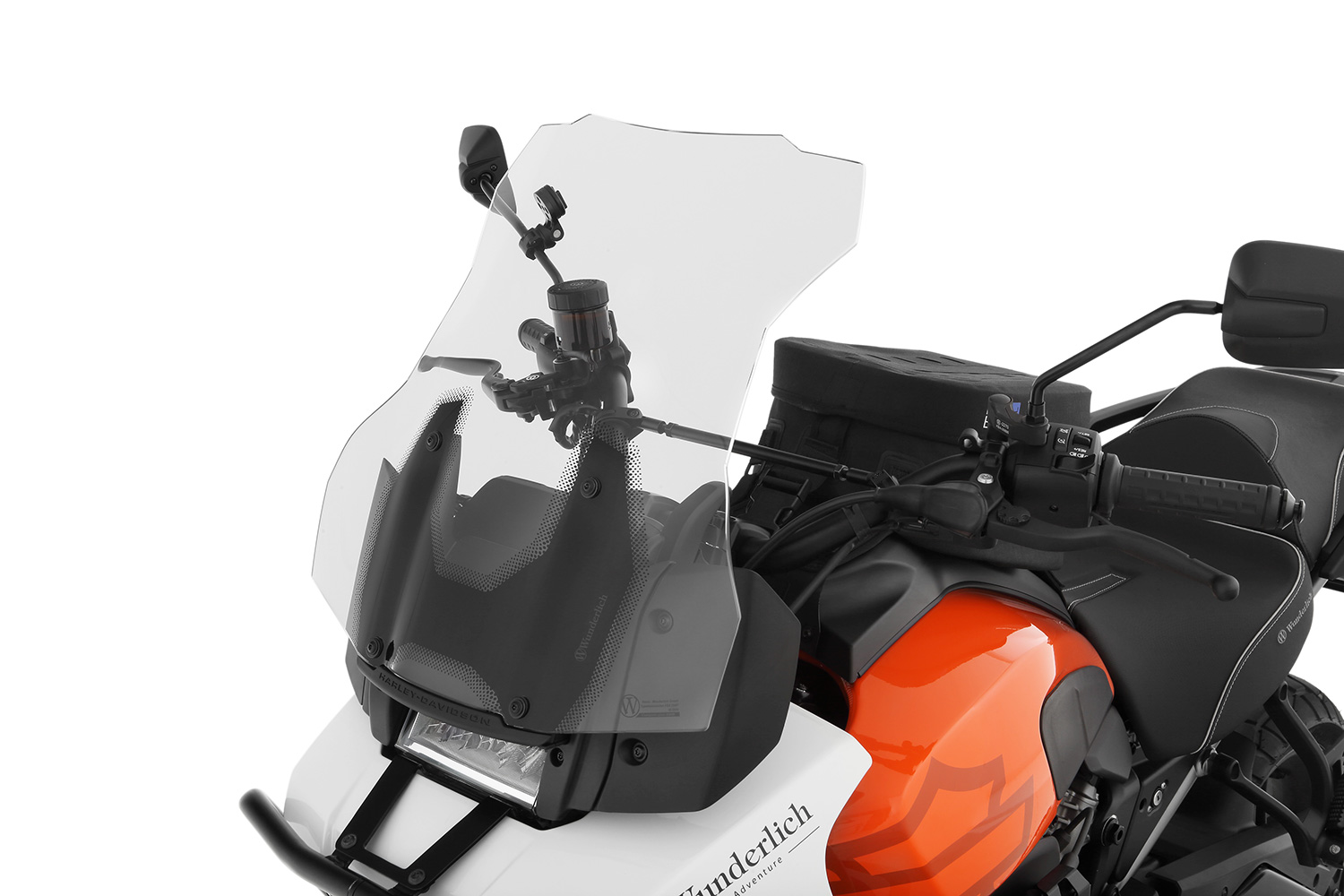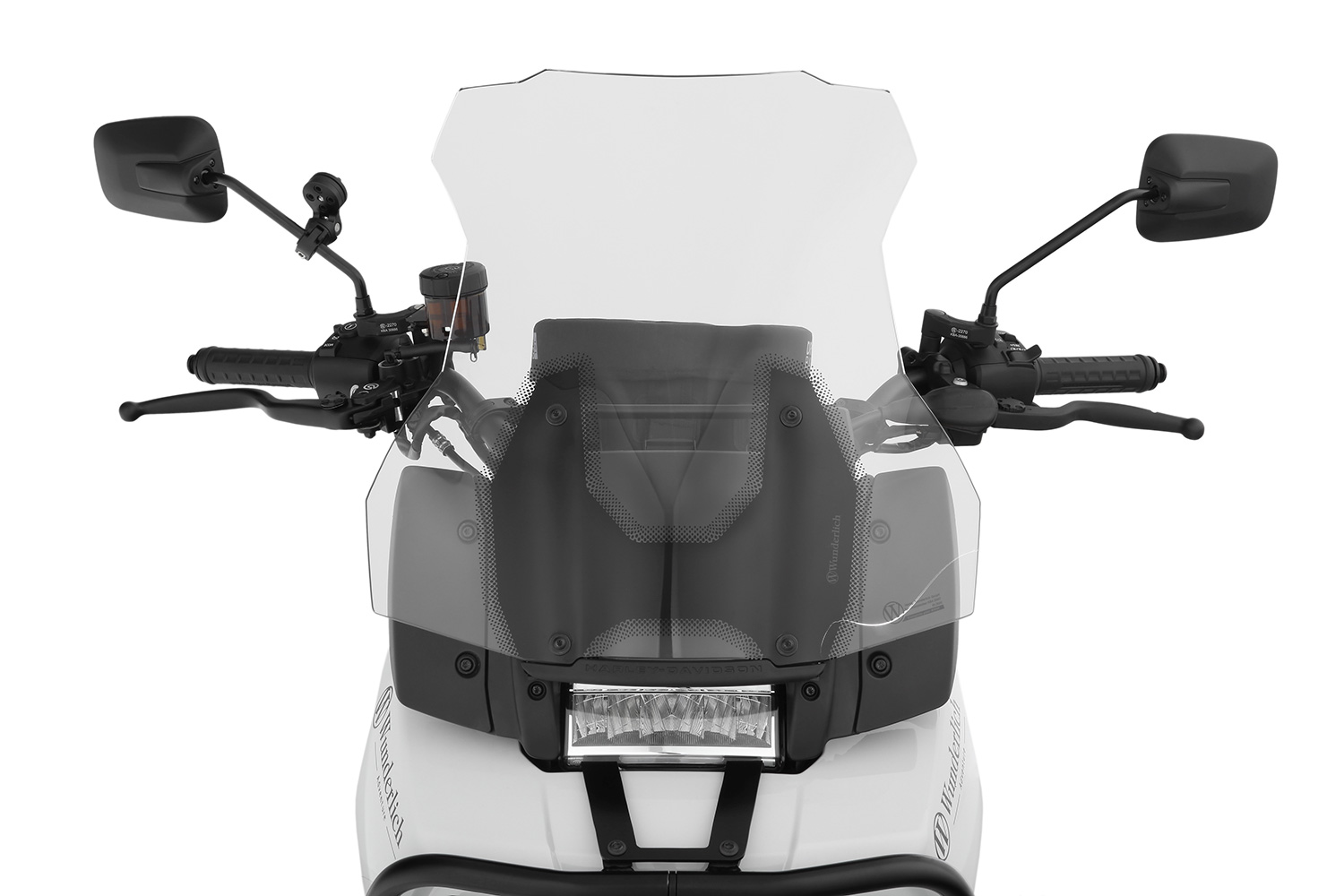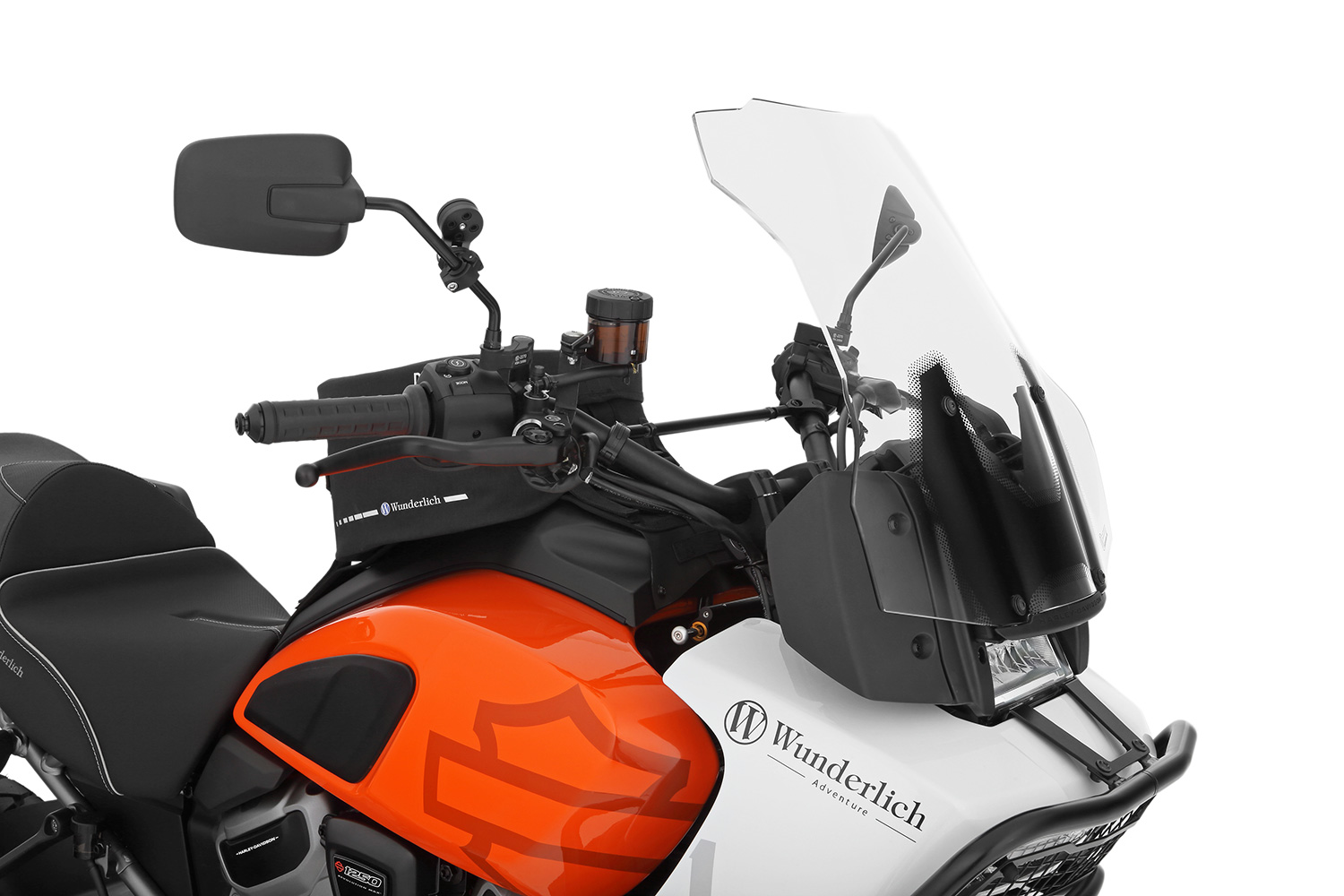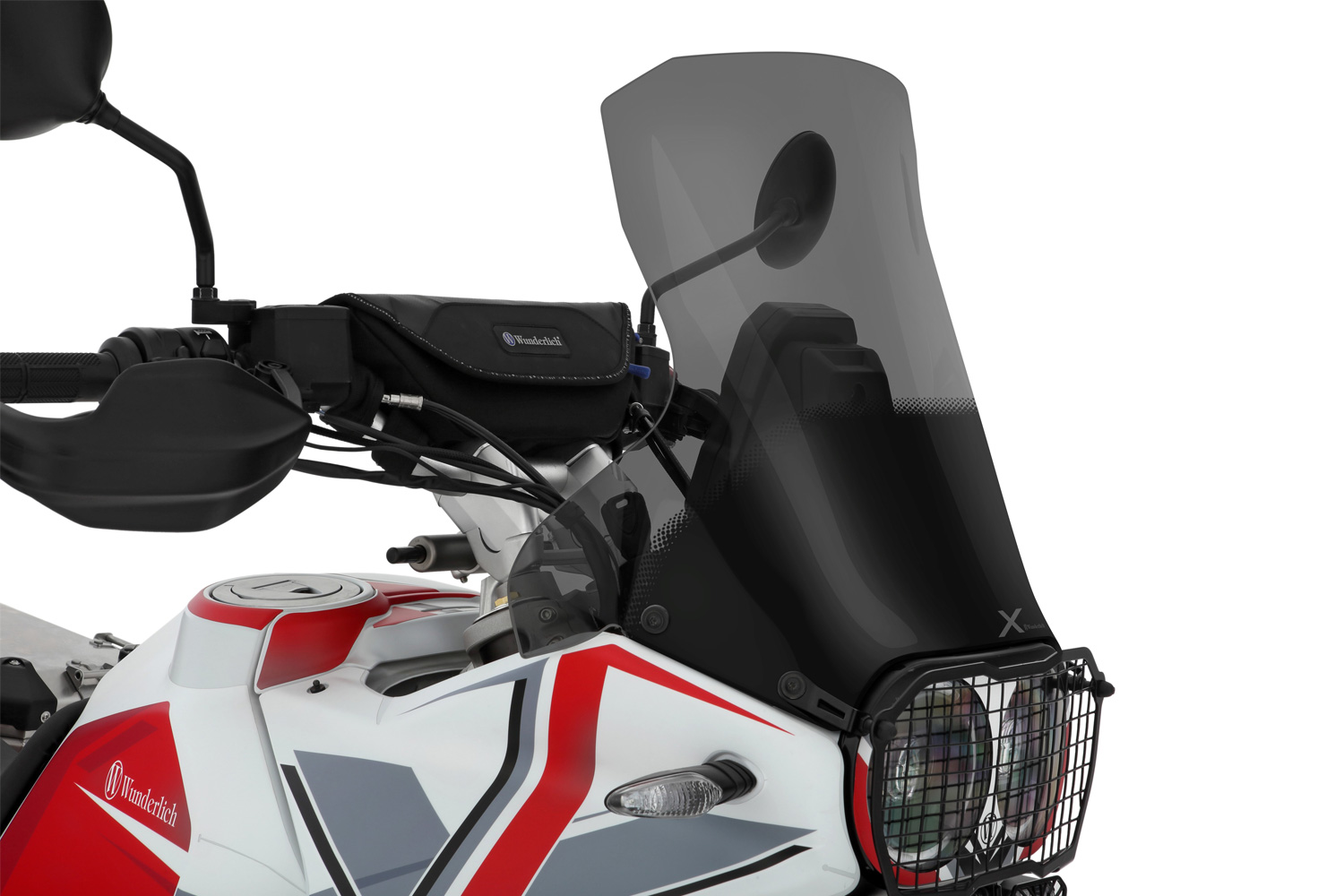
Development process using the example of our »MARATHON« windshields.
One of our development principles is to develop components in a model-specific way whenever possible. This also applies to our MARATHON windshields.
The aerodynamics of the windshield for the model in question are first meticulously calculated. However, it only receives its final, fine tuning in extensive road tests. Experienced test riders use sensors to collect data over tens of kilometres on the flow and vibration behaviour on the windshield and helmet, on the speed-dependent wind load and its effect on the fastening points or on the noise level (sound pressure level). This objective data is recorded with a data logger during the test ride. For the precise evaluation of the data, our data logger also records the GPS data for the speed and the test track itself, which we correlate with the physical data from the sensors. The evaluation of the objective physical quantities of the sensor signals, the speed and the distance are used towards the continuous optimisation of the windshield. So much for the theory.
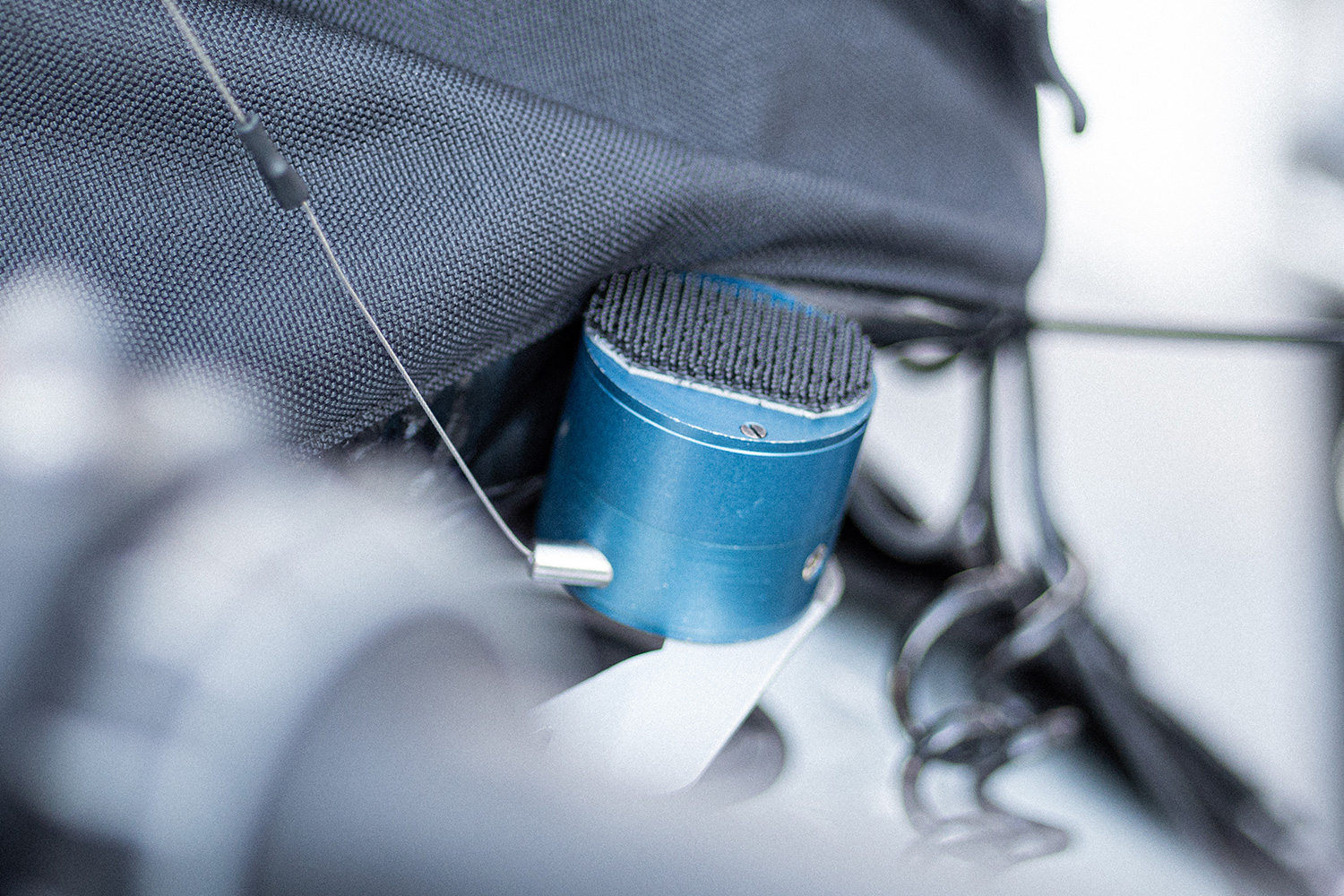
Displacement sensor for recording the deflection of the windshield under a wide range of ambient and load conditions
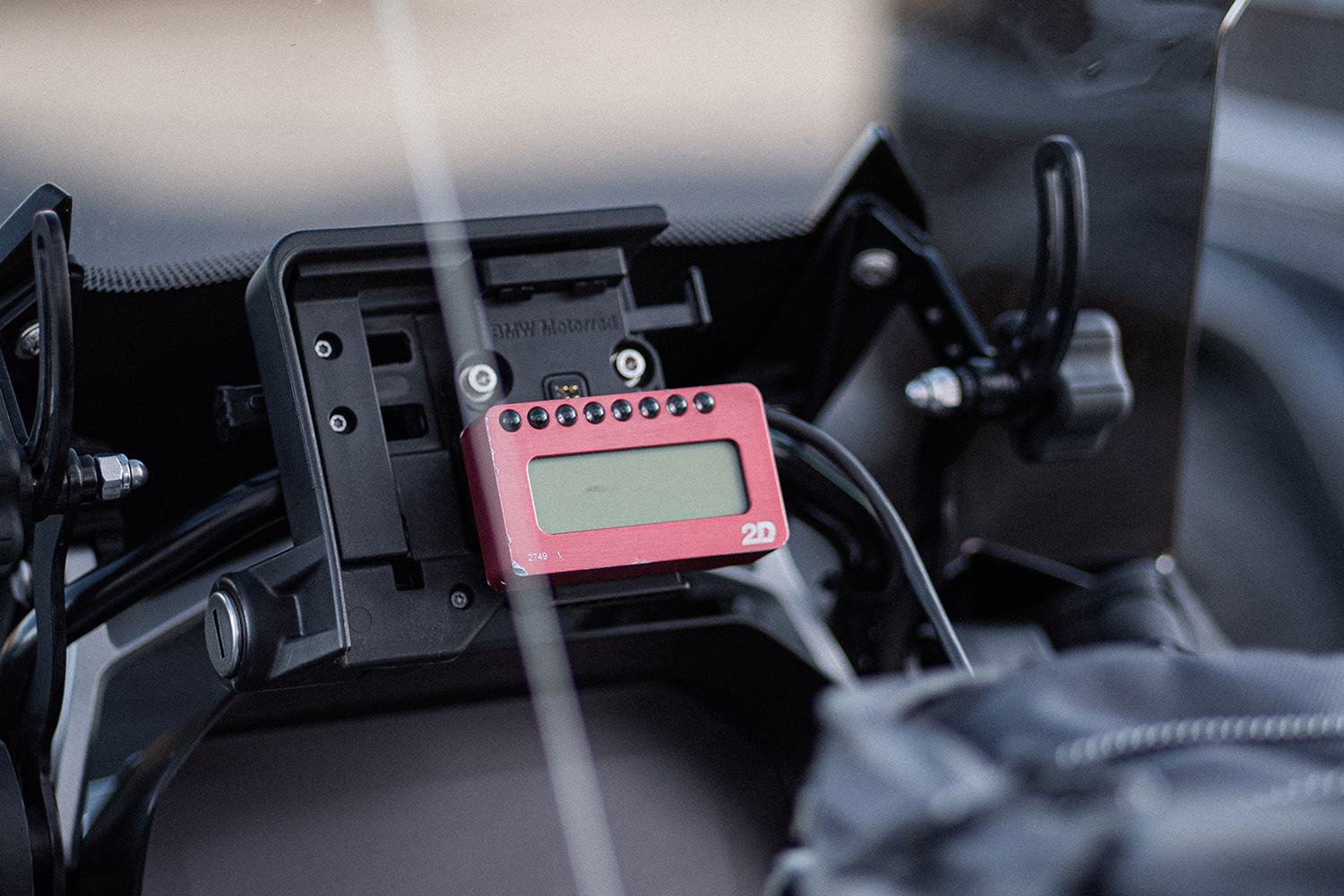
Real-time data display: displays the can-bus and the data of the sensors and the GPS system
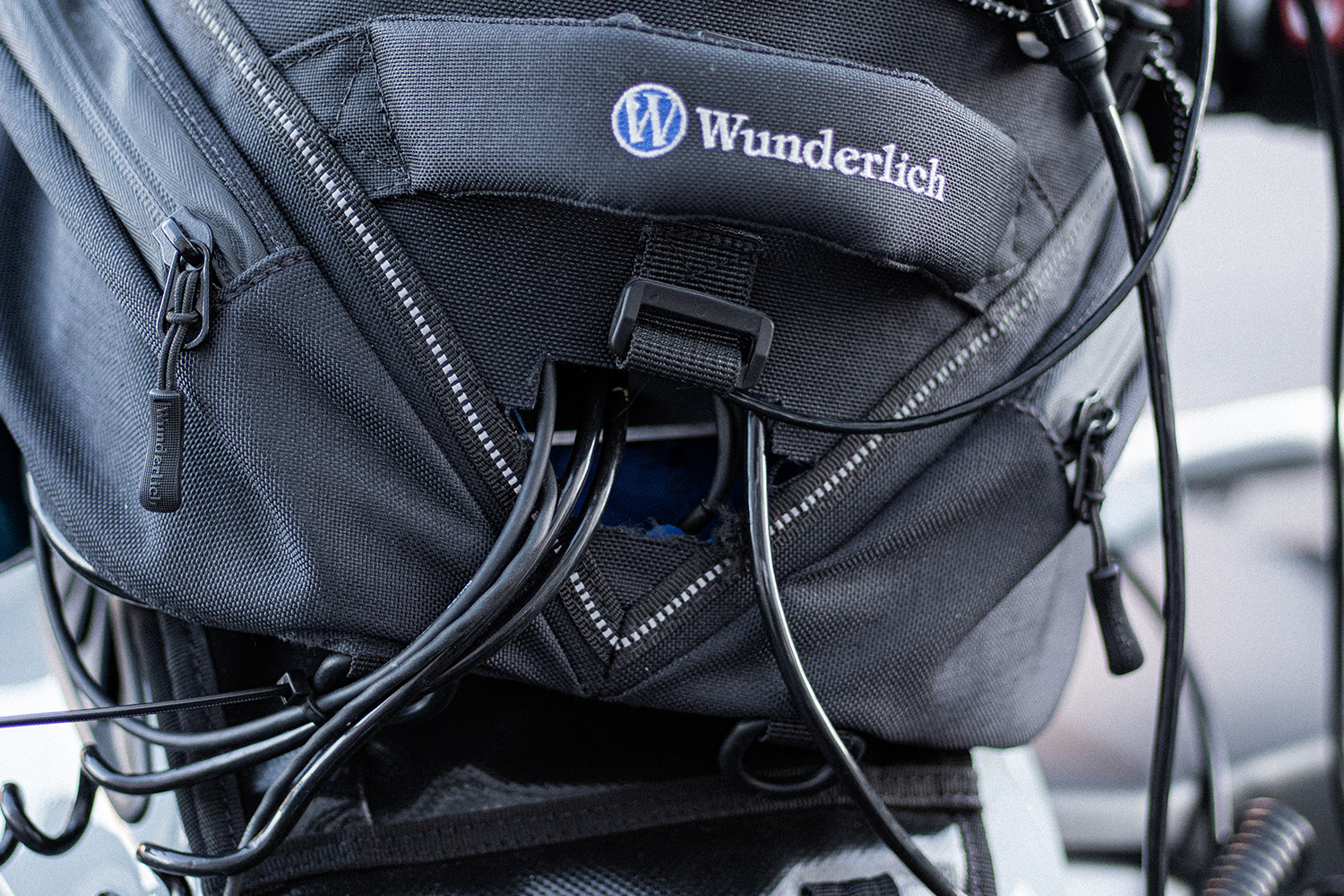
ELEPHANT tank bag as a black box: data recording, GPS system and the interface to the can-bus system are housed here
With our developers’ many years of experience, the combination of both methods, objective and subjective data acquisition and their interpretation for optimisation has proven to be the most effective method. And we are constantly developing them further.

